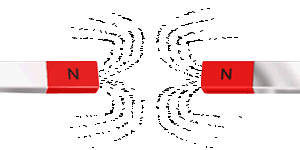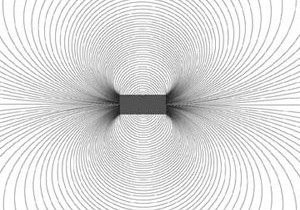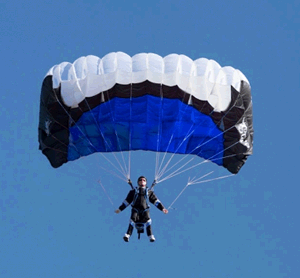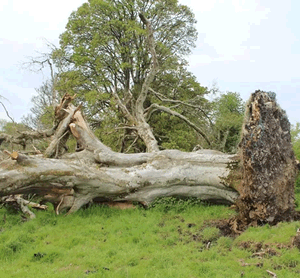Contact and non-contact forces

A non-contact force is a force which acts on an object without coming physically in contact with it, as compared to a contact force which, as the name implies, is applied by an object in contact with another object.
Three examples of non-contact forces are:
- gravitational force,
- electrostatic force (as pictured on the right) and
- magnetic force.
Non-contact forces act through fields. For example gravitational forces are present in gravitational field, magnetic forces are present in a magnetic field and electrostatic forces are present in an electric field.
Examples of contact forces include:
- frictional forces, which occur when to objects rub each other
- drag forces, which occurs when air or other fluid particles collide with the surface of an object moving though the fluid.
- tension forces which are experienced when
an object is being stretched.

Magnets form a magnetic field around them. Magnetic fields consist of lines of force. Forces of magnetic attraction and repulsion move along these lines. Magnetic field lines can be seen by spreading iron fillings in a magnetic field.
Like poles repel each other. Two North poles show repulsion lines as do two South poles. While North and South poles attract. Note the difference in field lines between repulsion and attraction.
Many forces can act on an object. The sum of all these forces is known as the net force.

Magnetic lines of force have a numberof properties that you should know about. They include:
- They form closed loops from pole to pole that represent paths of least resistance.
- They never cross one another.
- They all have the same strength.
- The distance between them increases with increasing distance from the poles. .
- They flow from one pole, to the other .

Magnets can not only produce strong attraction but also strong repulsion.
What evidence do you see in the video that magnetic forces act over short distances?
View the video on the right.
The two magnets experience a force of attraction. This is obviously
These magnets are obviously less powerful than the magnets shown above.
Explain
why?

1) A skydiver falling back to earth has two forces acting on them. One is a contact force and the other is a non-contact force.
a) Identify the forces and explain why you have labeled each as a contact force or non-contact force.
b) In which direction is each force acting?
c) The skydiver is descending in a controlled slow speed that is constant. Is there a net force acting on the sky diver? Explain

2) How can forces of repulsion and attraction be achieved with magnetic fields?
3) Levitation is achieved by what type of forces?
4) What is the sum of all forces acting on an object called?
5) The tree,pictured on the right, was blown over by a strong force. Was this force a contact or non-contact force? Explain
6) Which factor determines the strength of all the non-contact forces
